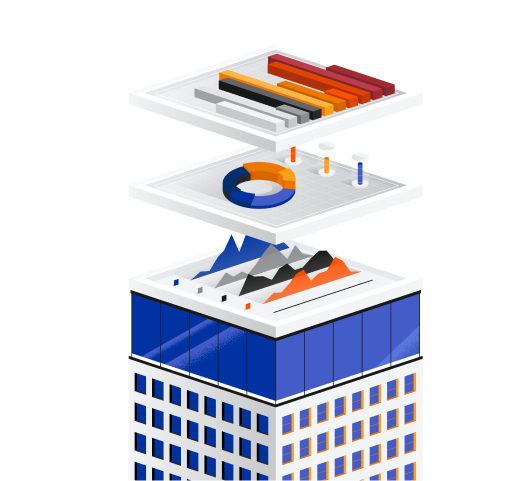— 10 min read
6 Construction Project Delivery Methods Compared
Last Updated Feb 15, 2024

Construction project delivery methods help determine the way that stakeholders work together during the planning, design, and building phases. While construction projects usually involve an owner, a design team, and a builder, the relationships between these members can differ depending on the project delivery method. Six of the most common project delivery methods in construction are Design-Bid-Build (D-B-B), Design-Build (D-B), Construction Manager at Risk (CMAR), Construction Management Multi-Prime (CMMP), Public-Private Partnership (PPP or P3), and Integrated Project Delivery (IPD).
Choosing the right project delivery method is a crucial step as it sets the tone for how the team will communicate and how payments will be distributed. Read on to learn the strengths of each project delivery method so that you can decide which is right for your project.
Table of contents
Overview of construction project delivery methods
The six main project delivery methods differ significantly in their approach to taking a project from design through completed construction.
| Construction Project Delivery Method | Description |
| Design-Bid-Build (D-B-B) | Also called “traditional project delivery,” it involves a design team and a general contractor working directly for the owner under separate contracts. |
| Design-Build (D-B) | The owner provides a contract to a single firm that handles both the design and construction aspects of a project. |
| Construction Manager at Risk (CMAR) | The construction manager acts as a representative for the owner during the design and construction phases, and the CM takes on project risk (usually with a contract that has a guaranteed maximum price). |
| Construction Management Multi-Prime (CMMP) | The owner acts as the general contractor and establishes contracts with the design team as well as the major subcontractors on the project. |
| Public-Private Partnership (PPP or P3) | A private company and government entity collaborate on a project, typically funded by the government entity and managed by the private company. |
| Integrated Project Delivery (IPD) | Everyone involved in the project is on a single contract that is predetermined before the design phase begins, spreading risk and responsibility equally among all stakeholders. |
For more details about each construction project delivery method, read on for descriptions as well as pros and cons.
1. Design-Bid-Build (DBB)
Design-bid-build (DBB), also called traditional project delivery, involves a design team and general contractor working directly for the owner under separate contracts.
The design team works with the owner to develop the contract documents: drawings, specifications, and other exhibits. Once the design is finished, it is sent out for general contractors to provide a bid on the project.
Then, the design team and owner evaluate the proposals from the GCs and select one to enter into contract with. Once the contract is signed, materials and equipment are ordered so that construction can begin.
Advantages
- May result in a lower-cost project due to the competitive nature of the bidding process
- Separating the design team from the construction team can potentially reduce conflicts of interest
Disadvantages
- The design phase can require the owner to spend a lot of cash before getting a firm price on the actual construction project.
- Depending on the quality of the design, the owner may be vulnerable to change orders, delays, and additional costs initiated by the contractor, who isn’t able to provide feedback before construction begins.
2. Design-Build (DB)
Design-build (DB) involves an owner contracting with a single firm for a project’s design and construction.
The entire project is led by either the architect or the contractor depending on who the contract is with — from start to finish, drawing a stark contrast to a design-bid-build project. In theory, when the design team and build team are rolled into one operation, the project becomes more efficient.
Architect-led agreements are generally used on projects that have a high difficulty of design, like new buildings, remodels, etc.
Contractor-led projects usually don’t rely on complex design, and involve repeatable work, like infrastructure or road projects.
No matter which way the contract is written, the architect and contractor are usually contractually connected between themselves, and one of them is connected to the owner and takes point on the project.
DB projects allow contractors and subcontractors to have a say in the design, which can be beneficial when they have extensive experience. The process from start of design to completion of construction is usually shorter too, so it is often used for fast-track projects.
Advantages
- May be more efficient and less costly due to the improved collaboration between the design and construction teams
- Owners experience simplified communication and financial commitments since there’s a single contract
Disadvantages
- Potential conflicts of interest between the contractor, who wants to keep costs low, and owners, who want a high-quality product
- May be added liability for general contractors, who could require additional errors and omissions insurance
Recently, a new design-build delivery method has emerged to address the risks of design build: Progressive design-build. Progressive design-build is a two-stage approach to design-build contracts that can effectively mitigate risk to both owners and contractors alike by giving them an “off-ramp” if they fail to reach an agreement during the design phase.
Learn more about progressive design-build.
3. Construction Manager at Risk (CMAR)
With Construction Manager at Risk (CMAR), a construction manager acts as the owner’s representative during both the design and construction phases.
As with traditional project delivery, the CMAR method separates the design and building processes. The construction manager is involved from the beginning with the design process, mainly as a cost controller, and also oversees construction in a similar way to a general contractor.
However, the CMAR accepts the risk for meeting the project deadline and owner’s cost requirements, which are usually expressed as a guaranteed maximum price.
If construction costs come in higher than expected, the CMAR is expected to absorb those costs, which reduces their overhead and profit. Of course, on the other hand, if costs are lower than expected, the CMAR will increase their profit, unless the contract calls for sharing the savings. Either way, the CMAR is invested in reducing costs and keeping the project on schedule, which helps the owner meet their project goals.
Advantages
- Potentially helps keep costs under control
- Improves communication between the owner and the design team or general contractor
Disadvantages
- A single point of failure exists in the CMAR, who can make or break a project
- The CMAR must actively guide and control the project or faces serious financial burdens from cost overruns
Build Predictability and Productivity
Deliver projects on time and on budget with greater visibility.

4. Construction Management Multi-Prime (CMMP)
In Construction Management Multi-Prime projects — also called multi-prime (MP) — the owner acts as a general contractor and goes to contract with each of the design team members and major trade contractors. This method is best for owners who have a lot of experience managing construction projects and want more control.
Advantages
- Subcontractors have a direct contractual relationship with the owner, potentially reducing payment problems
- Owners with significant construction experience are able to guide their projects more directly
Disadvantages
- Owners without sufficient experience can struggle to effectively guide projects
- The lack of a dedicated general contractor may lead to difficulties in managing problems as they arise on site
5. Public-Private Partnerships (PPP or P3)
Public-private projects — also known as P3 projects — get to reap the benefits of both public and private projects. As their name suggests, the project is the result of a partnership between a private and a public entity.
Projects like affordable housing and infrastructure are often the result of these types of agreements. Like private projects, they are built by a private company which helps create efficiency and add expertise. Like public projects, there’s a steady project owner, decreased payment risks, and a project that will greatly benefit the general public.
Depending on who plays what role in the project, there are two facets of these partnerships that contractors and suppliers need to be aware of: whether it’s subject to prevailing wage provisions and how each party can protect its payment rights. Publicly funded projects are subject to federal or state prevailing wage regulations. Privately funded projects are usually not.
When it comes to payment protection, mechanics liens can be used on projects where the property is owned by a private entity, but bond claims are needed to collect on publicly owned projects. On P3’s, it’s possible that neither type of claim is available — but bonds are usually present.
Advantages
- The public benefits from government funding as well as private-sector expertise in construction
- Projects are typically protected by bonds, which ensure that everyone working on the project will be paid
Disadvantages
- Projects can be delayed or impacted by changes in the priorities of the governmental agency
- Bond claims, if available, can be difficult to manage for contractors who aren’t paid for their work
6. Integrated Project Delivery (IPD)
Integrated project delivery (IPD) is a relatively recent addition to the suite of project delivery options. In these projects, all the project team members are contractually connected with only one contract. All team members are selected before design begins, and they each play a role in the whole process, from design to construction.
IPD is gaining popularity because everyone shares the risk on the project equally. Also, this method creates the most innovative and collaborative approaches to projects. When combined with other construction methods, such as lean construction, they can greatly improve the efficiency of construction methods and shorten project timelines significantly.
Advantages
- Risk is shared equally among all stakeholders on the project
- Collaboration may be improved by gathering all parties from the project’s outset
Disadvantages
- Can be difficult to make adjustments as the project goes on
- Requires a high degree of planning in the very early stages of a project
How to choose the best project delivery method for your project
Deciding which construction project delivery method is best for a project relies a lot on the type of project, how much control over the project and risk the owner wants, the project timeline, and the budget.
Each method provides a different amount of control and ties the parties together contractually in a different way. Every project is different, so you’ll need to choose the right method on a case-by-case basis.
Type of project
Different types of projects lend themselves to choosing certain project delivery methods. Projects involving repeatable infrastructure work will require a different approach to design and collaboration than projects with new designs, for example.
The project delivery method should maximize the benefits to the quality of the final product and the considerations below.
Control over the project and risk
The owner’s control over the project will be more important on certain project types than others. Nobody wants to take on risk if they can pass it on to someone else — but an experienced contractor may be able to take on more risk in exchange for a higher reward if they’ve had several successful similar projects.
Project timeline
The considerations for the project timeline for choosing a project delivery method are a cross between competitive needs and project efficiency. Some methods cut out a layer of communication that may slow things down unnecessarily. Some projects may benefit from separating project roles to avoid conflicts of interest or mix and match expertise.
Payment schedules may come into play as well, depending on how cash hungry each involved party is. Payments may also be a factor in the last section.
Budget
The budget may be fixed with a guaranteed maximum price, or be a consideration in assembling competitive bids, both of which can be best approached with different project delivery methods. Poor cash flow coming from the timeline may result in poor financial choices and budget overruns as well.
All of these elements need to be considered together to make the right choice based on the expertise of all companies involved and the distinct characteristics of the project at hand.
Categories:
Tags:
Written by
Dawn Killough
33 articles
Dawn Killough is a writer with over 20 years of experience in construction, having worked as a staff accountant, green building advisor, project assistant, and contract administrator. She shares fundamental green building strategies and techniques in her book, Green Building Design 101. Dawn lives in Portland, Oregon.
View profileWin More Work
Get discovered for relevant work on the Procore Construction Network.

Explore more helpful resources

Construction Drawings: Picturing Project Success
Every construction project — whether it be a kitchen renovation or a new highway overpass — relies on a set of comprehensive drawings to communicate what should be constructed. For...

Construction Teamwork: Build a Solid Foundation With the Right Team
Construction is an industry of collaboration — no one person completes any job on their own. It could easily be argued that the most important skill for anyone in this...

Contract Precedence: A Clause to Clear Construction Confusion
Construction contracts are usually lengthy and complicated, composed of a wide range of documents In a perfect world, the contract provides the clarity and direction all stakeholders need to move...

A Contractor’s Guide to Working With Construction Union Labor
In the construction industry, unions play a critical role, bringing together laborers and tradespeople such as plumbers, carpenters or masons under collective bargaining agreements with employers. These agreements set the...
